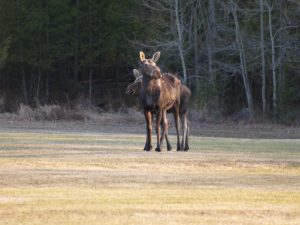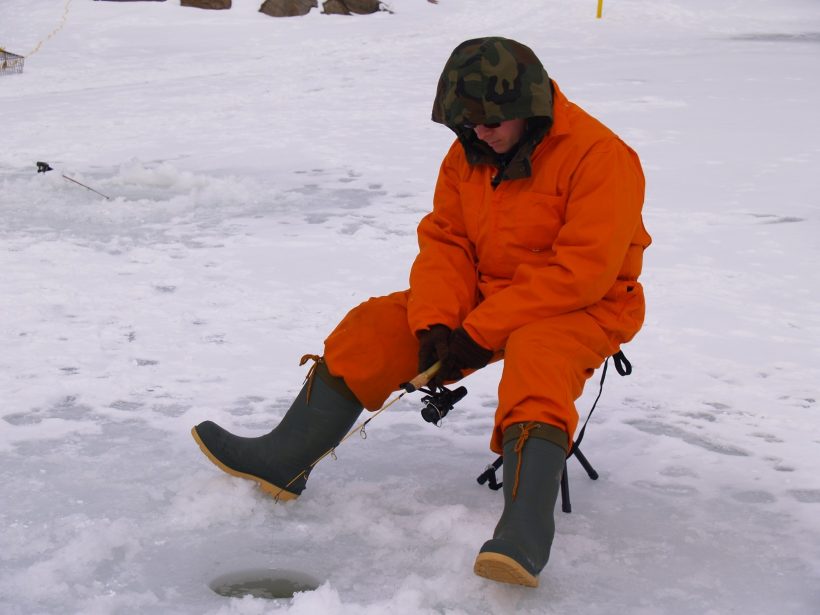
THE SUMMER THAT NEVER WAS
When guest columnist Ralph Bice wrote about the summer that never was of 1826 my subconscious subtly went into overdrive. Ralph, as he commented, was relying on what he remembered reading in a newspaper. My subconscious simmered until it overflowed to my conscious thought and I contacted Environment Canada who responded that their records only go back as far as 1840. However, Climate Services would ask Library Services to search for any publications relating to this event.
Shortly thereafter I heard from Climate Ontario asking if it was possible that “the year of interest was 1816 instead of 1826?” CO sent me information from THE YEAR WITHOUT A SUMMER?: WORLD CLIMATE IN 1816, edited by C.R. Harington. There was information about Toronto weather and a chapter on “THE ECOLOGY OF FAMINE IN 1815-17” by Roger Suffling and Ron Fritz which discusses famine conditions in 1816 in NW Ontario.
The mean July temperature for Toronto in 1816 was calculated to be “remarkably low (nearly 16 degrees C).”
The book indicated that the extraordinary summer weather of 1816 was blamed on the eruption of the Tambora volcano in 1815 which has been associated with social and economic disruptions globally.
There were famines in the winters of 1815-16 and 1816-17 in NW Ontario among both the Ojibwa and Hudson’s Bay Company traders who relied on 7 basic resources: moose, caribou, wild rice, potatoes, fish, waterfowl and furbearers. The 1815-16 famine “was extremely severe” resulting from a non-climate induced reduction of moose and caribou and a natural cyclic crash in the snowshoe hare population. The early summer drought of 1815 reduced the potato crop and late summer rain and cold ruined the wild rice harvest and fishing. Combined with an early failed goose migration it left the Ojibwa and HBC employees starving.
The dry, cold summer of 1816 produced a large if indifferent quality potato crop and normal wild rice and fish harvests. The winter 1816-17 famine was the result mainly of deep snow conditions but the HBC was able to feed many starving natives. “Thus the cold, droughty summer of 1816, the ‘year with no summer’, may have done as much to ameliorate famine among the Ojibwa people as to create it.”
NW Ontario is a harsh land of sub arctic forests. In the early 19th century the population probably never exceeded a few thousand inhabitants. Severe epidemics of smallpox and other diseases periodically devastated the Ojibwa and Cree but starvation most effectively controlled their numbers. The following report is from Osnaburgh House.
“An Indian woman of the Crow gang came in to [sic] day with her four young children all much starved and with a very miserable report. Says that her husband starved to death two winters back since which she has been in wretchedness and want with four children to support. Her friends take but little notice of her being under the impression that she ate her husband when under one of the greatest of all miseries extreme starvation.” Researchers stated that the term “starving” ranged in meaning from being unable to obtain food for days at a time to the most extreme resulting in death. “It is apparent that starvation contributed to death by other means. The woman cited above struggled on in the same pathetic condition for two more years before succumbing to an illness: she had killed her husband to survive a famine.”
Researchers used the term “famine” to mean general starvation among people that was sufficiently prolonged to become life-threatening.
According to the book, the 1815-16 famine is particularly striking because it corresponds with climatic fluctuations caused by the Tambora volcano eruption in to-day’s Indonesia, early in 1815.
Researchers studied the Osnaburgh House records in an attempt to determine if the 1815-16 famine was caused by unusual weather conditions.
Bishop (1974) postulated that the Ojibwa near Osnaburgh House had moved there from around Sault Ste. Marie in the early 1800s. Initially, they were big game hunters subsisting on moose and woodland caribou. Bishop believes that after their first European contact they began trapping in NW Ontario for the new commercial fur trade. Rival companies, French then Scots from Montreal and Americans moved in. “This induced the Ojibwa to remain on the summering grounds year round, but forced a radical reorganization of their hunting strategy.” They had hunted in large groups but with the need to spread out to trap beaver they broke into family groups and used firearms. Moose and caribou meat and skins were traded to the HBC “putting further pressure on the herds.” By 1815 both species were “somewhat depleted.” Now there was less food and less leather for moccasins and snowshoes which hampered both their food gathering and trapping.
Moose and caribou were hunted all year and “herded into the water for slaughter in the summer.”
Deep snow slowed the animals, making them more vulnerable but thin snow allowed them to easily outrun hunters. Extremely deep snow made movement very difficult for both hunters and the hunted. Crusted snow benefited both two and four legged predators further depleting the herds.
FISH
Fish made up the third major food source including Whitefish, pickerel, pike and sturgeon which were particularly important and were speared and netted when spawning in early spring. Pickerel, pike and whitefish were sought until warmer waters affected their eating quality. Fall fishing resumed with colder water temperatures and spawning activity. “The early nineteenth century natives do not seem to have mastered the art of ice fishing with nets as the HBC people had.”
High water, especially in the fall, “generally signaled a fishery failure.” Heavy rainfall, perhaps combined with cool weather, hurt the fishing, cutting the spawning season short as the fish headed for deeper water. Whitefish were vitally important to the NW Ontario HBC posts during the winter and they were intensely netted as soon as the temperatures dipped to store fish. “In times of native starvation these fish were distributed to Ojibwa begging at the posts, as long as the HBC’s own supply of stored or fresh fish remained assured.” In part this was a charitable action but the HBC needed the beaver trappers who were the lifeblood of the company.
NEXT – PART 2
AND FINALLY… To Edit or Not?
A single vowel can carry a lot of weight. Once, when I was writing about moose bulls, an editor changed one vowel with embarrassing results in a family newspaper.
Recently, I read a home improvement ad for “sustainable Florring.” Then there was the columnist who wanted to test his “new underwear camera” on a few largemouth bass. I wonder how that turned out?
